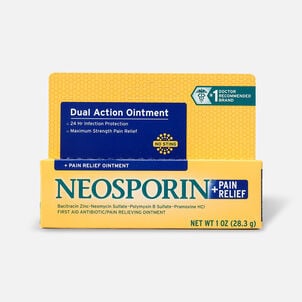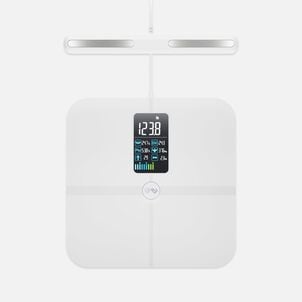Think about the last time you shopped for over-the-counter (OTC) medications. You may recall a dizzying selection of countless options packaged in bright colorful boxes, all claiming to remedy similar symptoms, especially when it comes to seasonal allergies.
Claritin and Benadryl have long been classic mainstays in the allergy relief department for many Americans, but the next time you reach toward the shelf, you may ask yourself, "Claritin or Benadryl?" Or better yet, "Are they the same?" With OTC allergy meds as part of the ensemble of now fully FSA eligible OTC medicines, we want you to have the insight you need to make your next search for eligible allergy relief a successful (and sneeze-free) one.
Claritin (Loratadine) vs. Benadryl (diphenhydramine)
Lorata-what? Diphen-who? Normally, we'd leave the tough words to the experts, but this distinction is actually fairly important when comparing Claritin to Benadryl. Loratadine and diphenhydramine are the generic drug names for Claritin and Benadryl, respectively. And at the root of it, are both antihistamine medications.
What are antihistamines? According to WebMD, histamine is a chemical released by the body in response to an allergen. Histamine is responsible for common allergy symptoms such as runny nose, hives, itchy eyes, and watery eyes, all which result from hayfever (allergic rhinitis) or an allergic reaction to allergens like pollen, dust mites, or ragweed. In this case, antihistamines, as the name implies, block histamine. The difference between these two antihistamines comes in how they block histamines, their side effects, their many forms, and who can take them.
How do Claritin and Benadryl work?
Benadryl (diphenhydramine) is categorized as a first-generation antihistamine. This means it was the first antihistamine medicine developed to treat allergic reactions, like nasal congestion and itching, and seasonal allergic rhinitis. Claritin (Loratadine) however, is what's known as a second-generation antihistamine. This means it's among a newer class of antihistamine medicines developed to also treat allergic reactions and seasonal allergic rhinitis.
The most notable difference between the two generations of drugs is that one is a non-sedative antihistamine (non-drowsy) and the other, a sedative antihistamine (drowsy). Loratadine works on blocking the histamine receptors (H-1 receptors) located outside the brain and spinal cord resulting in a non-drowsy approach toward blocking histamine. Diphenhydramine also blocks H-1 receptors, but does so differently, which affects other functions of the body like the body's reuptake of serotonin - a natural mood stabilizer - and leads to sedative and drowsy effects.
According to research from a literature review, second-generation antihistamines like cetirizine (Zyrtec) have "the fastest onset of action among the newer antihistamines." For those concerned with quicker results, these options prove favorable over their older counterparts.
Side effects of Claritin and Benadryl
As mentioned, the most prominent difference between Claritin and Benadryl would be sedative and nonsedative. This alone weighs heavily on the decision of which antihistamine people prefer.
For a sedative antihistamine like Benadryl, side effects such as drowsiness, dizziness, and incoordination are most common. Even though Benadryl is effective in inducing sleep, this does not mean Benadryl should be taken as a sleep aid for allergy season.
Compared to Benadryl, Claritin has mild side effects. The most common side effects users experience with Claritin would be headache and dry mouth.
The many forms of Claritin and Benadryl
Both Claritin and Benadryl come in a variety of forms from an oral tablet, to a chewable, oral liquid, liquid-filled capsule, and more. Some of these have advantages over others. For example, Claritin and Benadryl can come in the form of an oral disintegrating tablet or an oral dissolving strip.
The latter method is especially helpful for a litany of reasons: it does not require swallowing, does not leave a residue or trace, offers portability, ease to use for children or elderly patients, and according to a 2015 study published in Journal of Pharmaceutics and Drug Development, "increases the bioavailability of the drug," which essentially results in reduced dose and side effects.
Who can take Claritin and Benadryl?
Both Claritin and Benadryl have their limitations in terms of who can take them and what complications they may have with certain ailments, disorders, and medications.
Claritin should not be given to children younger than 2 years old. According to Drugs.com, a syrup version of the drug is recommended for children ages 2 to 5 years old, whereas the variety of forms from liquid capsule to disintegrating tablets is appropriate for 6 years and older.
Common medications that may interact with Loratadine (Claritin) include amiodarone, celecoxib, HIV medications such as darunavir, ritonavir, or saquinavir, dasatinib, diltiazem, fluvoxamine, mifepristone, and voriconazole.
Similar to Claritin, diphenhydramine (Benadryl) is also not suitable for children younger than 2 years old. According to Drugs.com, Benadryl may not be suitable for women who are breastfeeding, or people with respiratory diseases such as asthma or those with heart conditions. Some may also experience dizziness, low blood pressure, a headache, rapid heart beat, disturbed coordination, abdominal discomfort, and it may worsen the symptoms of gastroesophageal reflux disease (GERD) if used on a regular basis.
Common medications that may interact with Loratadine (Claritin) include benzodiazepines, such as diazepam, oxazepam, and temazepam, monoamine oxidase inhibitors, such as isocarboxazid, selegiline, or tranylcypromine, opioids, such as oxycodone, morphine, or codeine, sedatives, or any medication that causes sedation, such as sleeping pills, muscle relaxants, or antidepressants. You should also avoid alcohol as it can enhance its sedative effects.
Claritin vs. Benadryl: The bottom line
When it comes to choosing the best OTC allergy medicine for you, it all depends on personal preference! The bottom line is that Claritin and Benadryl are both FSA eligible over-the-counter antihistamine medications proven to help with relief from an allergic reaction or perennial or seasonal allergic rhinitis.
When sedation is a concern, Claritin makes for both a desirable and practical option for daytime relief from allergies. This is especially important for those who need to return to their normal day-to-day responsibilities such as driving, working, and other activities. If your allergies are keeping you up at night, Benadryl's sedative properties may be your knight and shining armor for nighttime allergy relief.
Keep in mind that Claritin and Benadryl aren't for everyone, but both options come in a variety of forms to best suit your family's needs as both a staple in your medicine cabinet, or on-the-go relief! So the next time you're shopping for allergy medicine, be sure to consult your doctor about which allergy medicine is right for you this season.
-
Thanks for visiting the FSA Learning Center! To stay on top of all FSA news that can affect your health and financial wellness, be sure to follow us on Facebook and Twitter.

















